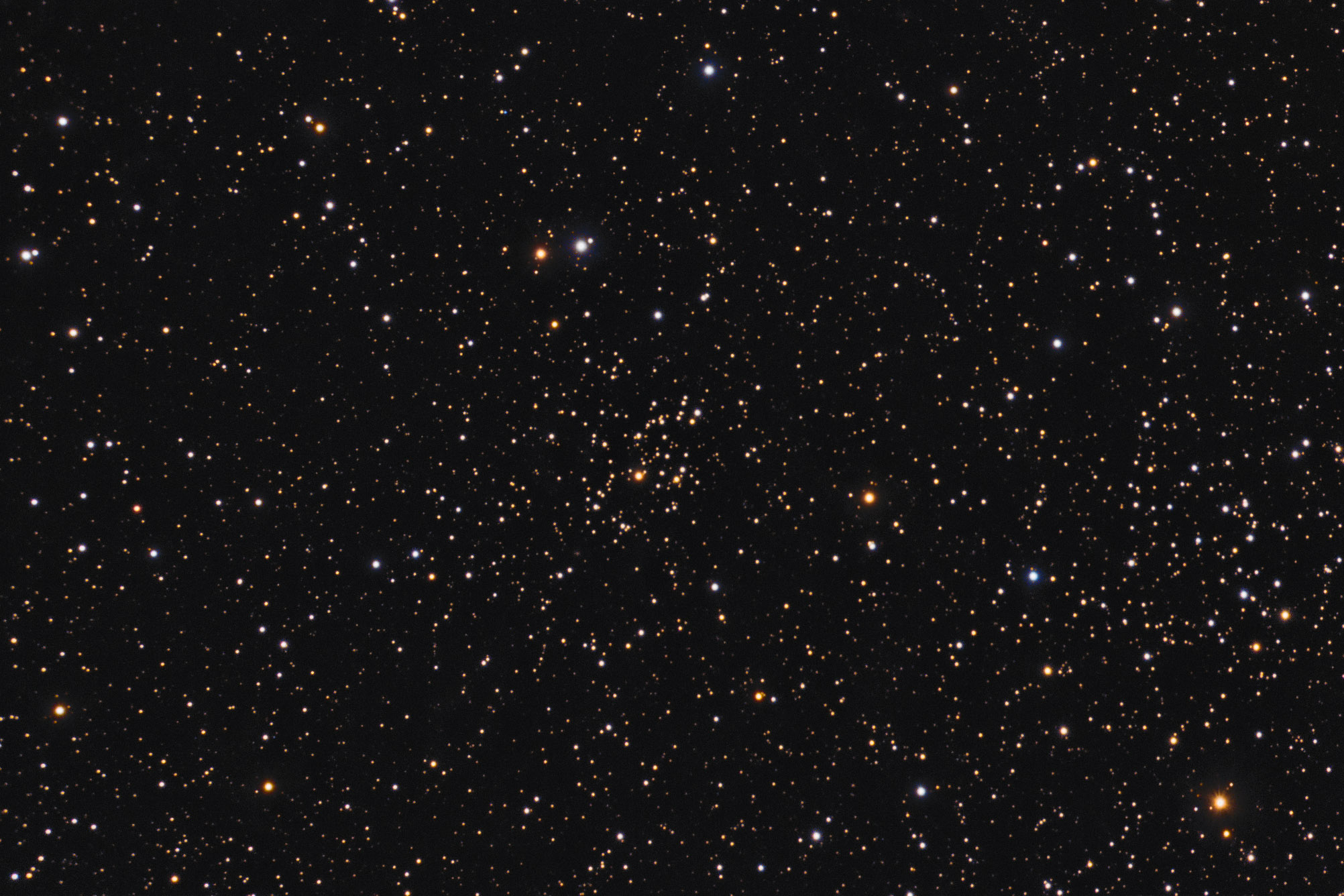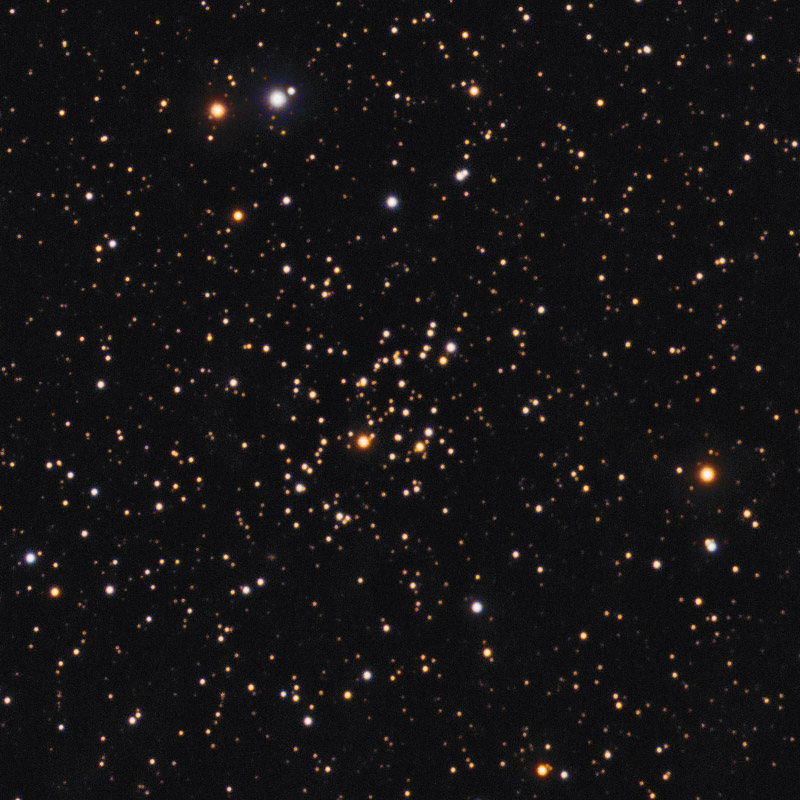| Description | Images |
Object name: BERKELEY009Designation(s): BERKELEY009, Berkeley 9 is an open cluster in Perseus. It is a very old cluster, as clusters go. Most are torn apart before they are even a million years old but Berkeley 9 has managed to hold together to reach the grand old age (for an open cluster) of nearly 4 billion years. That means all its bright young blue stars are history with only white to red stars remaining plus a few red giants in their death throes. It is said to be about 2,700 light-years distant. Also, it is listed as reddened by 0.79 magnitudes so even white stars will be somewhat red due to intergalactic dust and gas. Same as dust and gas in our atmosphere turns a setting or rising sun red by scattering away the bluer light. The cluster is listed as having a maximum diameter of over 14 minutes of arc though most of its stars are confined to a diameter of about 2.4 minutes. Related Designation(s):BERKELEY009, |

